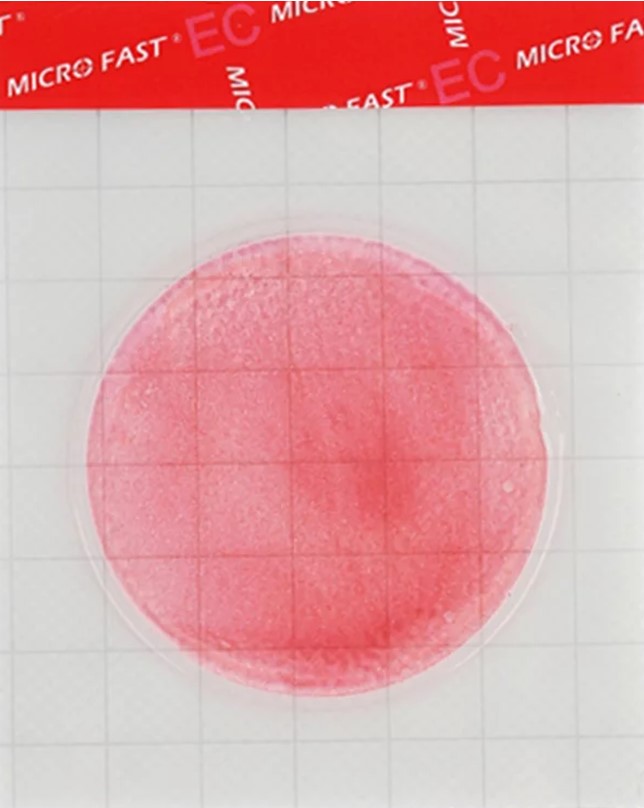Analysis of the chemical composition of nasal mucus will help prevent respiratory diseases in calves

 PIONEER MEIZHENG BIO-TECH (5 in 1) JC0726 / Rapid tests for determining the residual amount of Bacitracin, ansamycins, clindamycin, spiramycin, florfenicol in milk, whey
PIONEER MEIZHENG BIO-TECH (5 in 1) JC0726 / Rapid tests for determining the residual amount of Bacitracin, ansamycins, clindamycin, spiramycin, florfenicol in milk, whey PIONEER MEIZHENG BIO-TECH (5 in1) JC0586 - Antibiotic tests 5 in 1 / Rapid tests for determining the residual amount of β-lactams, tetracyclines and cephalexin in milk, whey
PIONEER MEIZHENG BIO-TECH (5 in1) JC0586 - Antibiotic tests 5 in 1 / Rapid tests for determining the residual amount of β-lactams, tetracyclines and cephalexin in milk, whey
Russian scientists have developed sensors to quickly detect respiratory infections in calves. The devices analyze the volatile compounds contained in the nasal mucus, and with high accuracy determine changes in their composition, indicating diseases. Due to their compactness and ease of use, such sensors will greatly simplify the identification of sick animals on farms and farms engaged in cattle breeding
The results of the study are published in the journal Veterinary Sciences. The study was supported by a grant from the Russian Science Foundation (RSF).
Respiratory diseases lead to significant losses in dairy farming. Affected calves gain weight slowly and die more often, while older animals that have had the disease produce less MILK. Infections can be caused by both bacteria and viruses. Many of them normally live in the respiratory tract of calves, but when hypothermia, stress, malnutrition cause respiratory diseases, such as rhinitis or pneumonia. At the same time, infections can be secretive for a long time, which greatly complicates their diagnosis.
Scientists from the Voronezh State University of Engineering Technologies (Voronezh) have developed sensors that allow early detection of respiratory diseases in cattle by a nasal mucus smear. Earlier studies have shown that there are a number of volatile organic compounds that indicate the presence of respiratory infections. They appear due to the fact that during the development of the disease under the influence of immune mechanisms, the work of the cells of the mucous membranes of the nasal cavity, the viscosity and composition of the proteins of the nasal secretions change, which affects the volatile molecules secreted by the mucus. Such biomarkers for respiratory disease include certain alcohols, aldehydes, carboxylic acids, ketones, and amines.
To analyze the complex of these volatiles in calf nasal mucus, chemists constructed 16 sensors coated with various polymers and nanomaterials, including polyethylene glycol, hydroxyapatite, carbon nanotubes, and others. These materials are capable of absorbing (sorbing) biomarkers of respiratory diseases with the greatest efficiency.
Detector "Diagnost-Bio-8" for the analysis of the chemical composition of the nasal mucus of calves. Source: Kuchmenko T. et al. /Vet. Sc., 2021.
The researchers took samples of nasal mucus from 20 sick and 20 healthy farm-raised calves. A preliminary medical examination showed that sick calves had all the signs of respiratory infections: fever, cough, wheezing, lung damage on x-rays. Excretion samples were placed in a detector cell, and sensitive coatings, when absorbing volatile compounds from the mucus, changed the signal fed into the analyzer. Therefore, the chemical composition of the secretions was evaluated. it turned out that in all samples taken from sick animals, the sensors revealed biomarkers of respiratory infections. At the same time, their composition varied somewhat, which may be due to the different nature (bacterial or viral) and the severity of the disease. At the same time, in samples of nasal mucus from healthy calves, compounds indicative of infection,
To further test the accuracy of the technique, the researchers took samples of the nasal secretions of ten more calves, determined their chemical composition, and then compared the results of the analysis with the state of HEALTH of the animals. All samples that contained biomarkers of infections belonged to calves with symptoms of respiratory diseases, and samples without biomarkers belonged to healthy animals.
Laboratory analysis of nasal discharge samples from calves. Source: Anastasia Shuba.
“We have developed a simple non-invasive technique that can quickly detect respiratory infections, greatly simplify the diagnosis of diseases and allow earlier treatment of sick calves. This will improve the quality and quantity of milk and MEAT produced on farms, prevent both the death of cattle and the cost of their treatment,” says Anastasia Shuba, PhD in Chemistry, Associate Professor of the Faculty of Chemistry at VSUIT.
Read together with it:
- The Russian Ministry of Agriculture proposes extending veterinary regulations until 2032.The extension includes regulations for the prevention and eradication of diseases such as bradsot (Clostridium septicum), trichinosis (Trichinella), blackleg (Clostridium chauvoei), and porcine reproductive and respiratory syndrome (PRRS). The proposed changes stipulate the following new deadlines: for bradsot and trichinosis - from March 1, 2......
- An HSE expert reported on the "evolution of inequality" in access to healthcare.An HSE researcher analyzed Russians' access to healthcare over a ten-year period. In 2021, the influence of financial factors became noticeable for the first time: low income reduces the likelihood of visiting a DOCTOR.Over the ten years from 2011 to 2021, the number of Russians requiring medical care but not receiving it remained virtually unchanged, according to a study by Lyudmila Zasimova, hea...
- He crawled to the icon with prayer. The true story of a man who overcame drug addiction.Alexander Ovchinnikov. Topic News. Our project's hero was a drug addict for many years. The thought that this was a dead end never left him, but his addiction proved stronger. One day, when he could no longer walk, he crawled to an icon in prayer. This became his first step toward a new life. Today, he heads a charity center that helps those who have given up hope and are unable to quit ALCOHOL an...
- Низкое предложение и устойчивый спрос: в Аргентине растут цены на мясоЦены на говядину снова выросли, что отразилось на полках супермаркетов и в мясных магазинах. За последние две недели розничные цены выросли на 8–12%, а на некоторые популярные отрубы рост превысил 15% по сравнению с октябрем. Тем не менее, продажи остаются высокими: потребители продолжают покупать, принимая новые цены и закрепляя тенденцию, которая повторяется каждый год в конце года, когда спрос ...
- Колумбия: При экспорте скота сертификация и прослеживаемость больше не являются необязательнымиВысококачественное животноводство, особенно при экспорте, требует сертификации и прослеживаемости. Это необходимые условия для выхода и конкуренции на многих международных рынках, а также на некоторых всё более требовательных внутренних рынках. Колумбийское животноводство не является исключением из этих правил, и, хотя предстоит ещё многое сделать, всё большее число ферм и компаний внедряют эти ме...
- Лучшие не только по молоку. Какие рекорды поставили в экспериментальной базе имени КотовскогоНовости темы Экспериментальная база имени Котовского известна далеко за пределами Узденщины благодаря высоким показателям, которых из года в год добиваются в хозяйстве. Лучшие результаты в районе агропредприятие показывает как по молоку и зерновым, так и по сахарной свекле. Страда этого года, проходившая не в самых простых погодных условиях, также стала рекордной. Хлеб – всему голова Весна 2.........

























































